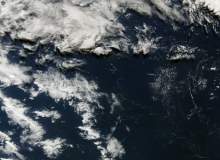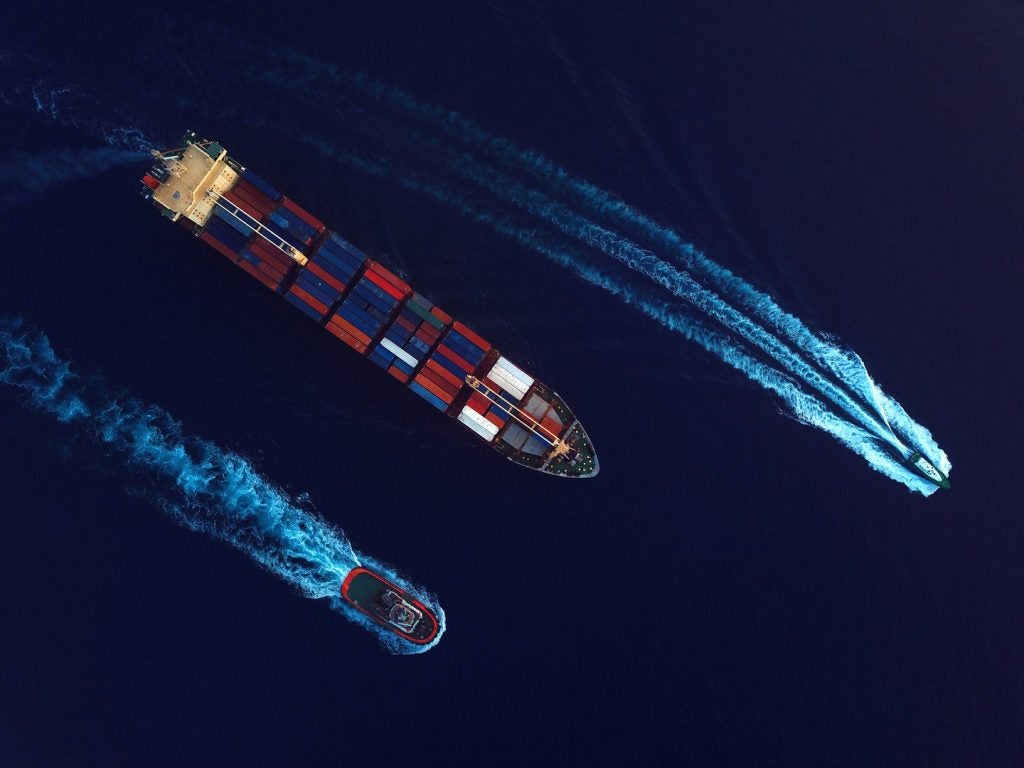
 Akin to smacks of jellyfish on surface waters, large, floating accumulations of pumice fragments have long been known to pose problems for shipping routes and vessels.
Akin to smacks of jellyfish on surface waters, large, floating accumulations of pumice fragments have long been known to pose problems for shipping routes and vessels.
The geologic flotillas – more commonly referred to as pumice rafts – are caused by large volcanic eruptions, usually taking place around 50m below sea level.
Rafts can potentially spread in swathes across hundreds of kilometres. And, in the event of coming into contact with ships, they can clog intake valves and bring about abrasion on hulls – particularly with smaller vessels.
It is therefore important that shipping routes and harbours are divested of pumice drifts. Namely, naval organisations need to be able to better predict the direction of raft flows so as to allow enough time for preventative measures to be set up in areas where there might be room for collisions.
Pumice rafts are a common feature in the waters of the Southwest Pacific, which is home to countless submarine volcanoes, including the Havre Seamount, which erupted in July 2012.
Case study: The University of Southampton and NOCS simulate the seas of the Southwest Pacific
Over the last year, a group of researchers from the National Oceanography Centre Southampton (NOCS) and University of Southampton have used this stretch of ocean as a basis for honing a new technique, able to predict the dispersal and drift patterns of such rafts.
How well do you really know your competitors?
Access the most comprehensive Company Profiles on the market, powered by GlobalData. Save hours of research. Gain competitive edge.

Thank you!
Your download email will arrive shortly
Not ready to buy yet? Download a free sample
We are confident about the unique quality of our Company Profiles. However, we want you to make the most beneficial decision for your business, so we offer a free sample that you can download by submitting the below form
By GlobalDataIn April, European politicians rejected plans to include nitrogen oxides – while carbon dioxide was approved.
The team, which was also assisted by fellows from the University of Tasmania, University of Otago in New Zealand, and Stanford University, simulated the drift of a 400-km2 raft from the Havre, using a high-resolution model of global ocean circulation -a kind of pelagic weather forecast, if you will.
The simulated results were then held up against satellite imagery of the area, as well as direct observations from sailing crews, which were reported back to NOCS and transposed into data. Overall, the large-scale experiment has proven itself to accurately reproduce the effects of oceanic surface drift.
“Pumice rafts can be regarded as passive objects in the ocean,” explains Bob Marsh, reader in Physical Oceanography at the University of Southampton, and a member of the research team.
“In other words, the primary influence on their movements is the movement of the water that they are floating in. We were able to take advantage of a lot of technology in Southampton that was able to reproduce global ocean circulation models, and accurately simulate and follow the movements of water.”
Surface waters typically move at speeds of 5-50 cm per second – “a fairly gentle speed, if you think about it,” says Marsh. But how was the model able to take into account the innate unpredictability of the ocean, where strong currents and winds can arise at any given moment?
“Firstly, we took enormous amounts of data – produced by models that simulate the world’s ocean currents – and used this surface current information to move around thousands of synthetic kind of particles that represent the raft’s form,” he says.
“We then recorded the movements of these particles over days to months and converted that into a sort of statistical analysis of where pumice rafts would drift if they were sitting in that part of the ocean. Further analysis of that information allows you to work out the probability that a ship might encounter pumice so many days after an eruption in any given latitude and longitude.”
Impressively, Marsh and his colleagues’ research was extrapolated from 23 years of current data – from 1988 to 2010 – as representative of the typical currents in the Southwest Pacific. At the time, the team didn’t have data for the actual conditions for 2012.
Making waves: Future eruptions and the scope for real-time forecasts
But while the research was based on an historic eruption, Marsh believes that, in the event of a future eruption, the technique could allow for real-time forecasts of the scattering of pumice rafts, as well as ash deposit distribution in the ocean.
“Once we know the size of an eruption, we could, in principle, work out the dispersal of a patch of pumice rafts – over a period of days to months – in a few hours,” he says. “That’s useful because agencies like the UK Met Office now have a global ocean operational forecasting capability, which we can use with our method to quickly forecast the spread of pumice from the known eruption.
“So, if we had evidence of an eruption tomorrow, then we could contact colleagues at the UK Met Office, access the currents – not just for today, but the next week, too – and repeat our calculations in a sort of real-time scenario.”
Shipping PR firm Jeanius Consulting picked up Marketme’s #SmartSocial award earlier this year for its innovative use of social media.
The next step: Further research to be carried out on a global scale
The potential of the investigation carried out in the Southwest Pacific is clearly not to be underestimated. However, as Marsh’s colleague, Martin Jutzeler, post-doctoral research fellow at NOCS, explains, research needs to be extended to other oceanic-volcanic areas, so as to develop a more rounded understanding of the formation, movement and dispersal of rafts.
“As for the next stage in our work, we’d like to potentially scale that up to global dimensions,” he says. ‘Taking into account the sheer number of volcanoes in the world – potentially active volcanoes that could, at any time, produce pumice rafts – we would like to investigate volcanoes systematically and identify the places where we should expect strong dispersal.
“Then we would have a global census, if you like, of the risk associated with pumice spreading from all these point sources.”







